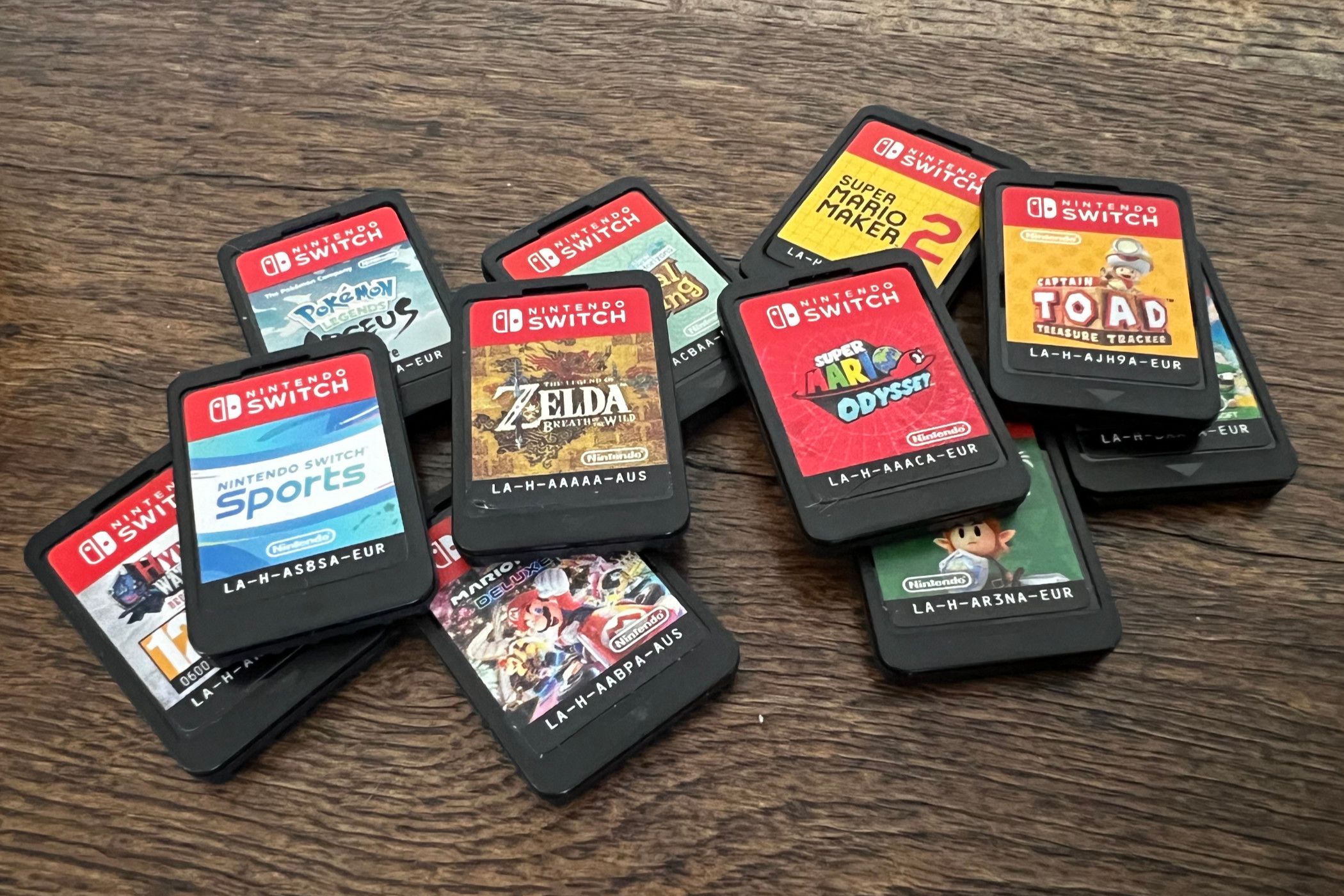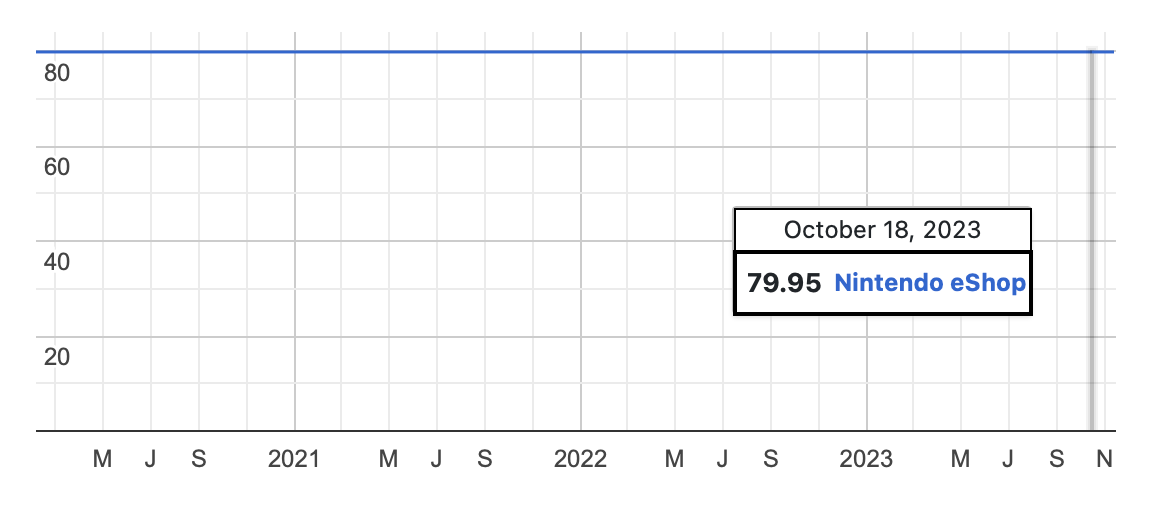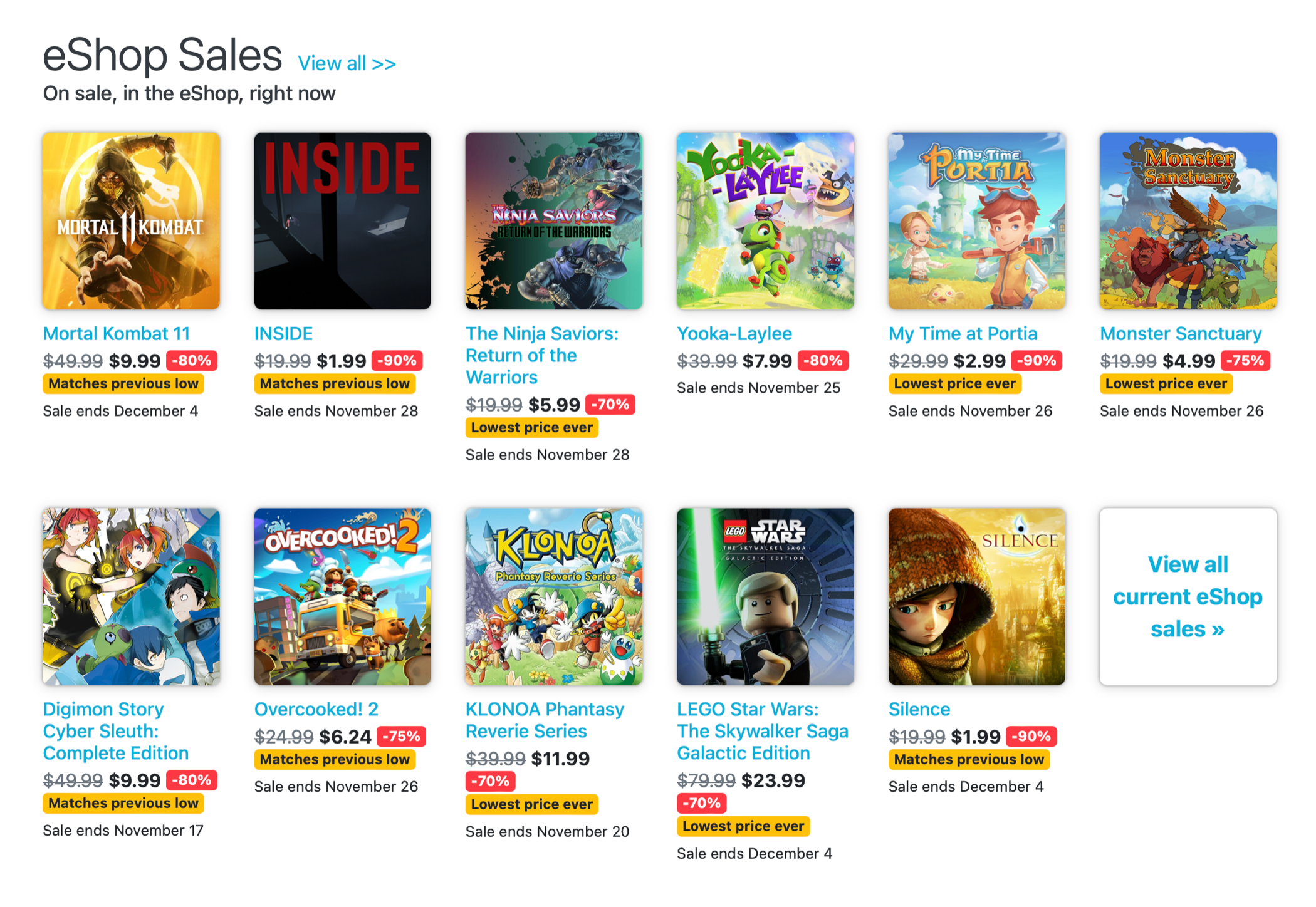Key Takeaways
- The demand for Nintendo games, combined with the company’s commitment to quality, allows them to charge higher prices.
- While first-party Nintendo games may not see many sales, the popularity of the Switch has led to plenty of bargains from smaller developers on the eShop.
Head down to your local games retailer or boot up the Nintendo eShop and you’ll see that many Switch games still fetch the same price they did when first released. So what gives?
Nintendo Games Have Been Pricey for Generations
A “Nintendo game” is ostensibly a game that is developed by or for Nintendo, that only appears on Nintendo consoles. Of course, cross-platform third-party games exist on Nintendo hardware but these are more likely to see price cuts, and less likely to hold their value over time as first-party games do.
Nintendo games being expensive is not a new phenomenon. In the days of the Super Nintendo (SNES), games averaged $10 more than they did on the Sega Genesis. Nintendo’s decision to opt for cartridge storage in the Nintendo 64 when competitors Sony and Sega were moving to optical discs is often blamed for keeping prices high due to manufacturing costs.
The Switch also uses cartridges but with the price of flash memory at an all-time low, it’s hard to see how manufacturing costs hit Nintendo’s pocket in the same way they once did. Furthermore, Nintendo’s digital library is also just as (if not more) expensive than its physical releases.
It’s easy to liken Nintendo to a brand like Disney. Back in the days when VHS and DVD releases were your only choice for owning a movie, the “Disney vault” term was coined to describe the company’s practice of producing limited runs of movie releases. You were able to buy The Lion King for a short while, at the price Disney set, and then it would be locked away in the “Disney vault” until the company decided to re-release it.
Nintendo emulated this exact tactic in 2020 with the release of Super Mario 3D All-Stars, a Switch bundle that featured Super Mario 64, Super Mario Sunshine, and Super Mario Galaxy on a single cartridge. The game was available for a limited run as both a physical and digital release, only to be removed from sale on March 31, 2021. This example of manufactured scarcity has seen copies of the game skyrocket in price ever since.
The Market Pays What Nintendo Asks
Like Disney and Apple, Nintendo is beloved by many. The company has produced some of the most cherished video game franchises of all time and no longer goes toe-to-toe with the likes of Sony and Microsoft for the same slice of the market. Nintendo hasn’t been concerned with pushing the envelope in terms of “next-gen” graphics since it shifted direction with the release of the Wii.
Nintendo’s powerful position in the market has seen the company effectively go it alone, shunning the release cycle adhered to by Microsoft and Sony, instead leaning into quirkier hardware choices like motion controllers and hybrid hardware. This phenomenon extends beyond hardware decisions and even affects pricing. This is evident in the way that Nintendo games rarely see significant discounts.
As an example, the image below shows the eShop price history for Animal Crossing: New Horizons since release.
This is why games in the Mario and Zelda franchises rarely see discounts of 30% or more, only sometimes hitting 40% off. Deep sales are very rare events, so don’t expect anything like Steam’s famous sales on PC. The high overall price of current-generation titles, even years after the initial release, keeps prices inflated on the second-hand market too.
Game retailers know this too, which means used games can often sell for only a few dollars less than brand-new copies. The enormous popularity of the Switch further compounds the issue. From a consumer perspective, there is little other choice. What are you going to do, not play the latest Zelda or Mario?
Though the option to emulate the Switch is an ever-present threat to Nintendo, it’s still a niche field. People just want to play games, and that means they’re going to pay what Nintendo wants to have the experience.
The Argument for Quality
The flop of the Wii U is proof that people won’t buy everything that Nintendo is selling. But the Wii U is proof of something else: even when Nintendo hardware misses, the company consistently produces high-quality software. Just take a look at the large number of Wii U re-releases that have sold millions of copies on the Switch. Titles like Mario Kart 8 Deluxe and Toad’s Treasure Tracker were always good games, they just never had much of an audience on the Wii U.
First-party Nintendo games in particular tend to be more consistent than most. The company has the money and talent to commit huge amounts of resources to even niche titles. On top of this, Nintendo has shown a greater commitment to delaying or even restarting development. This change came at a time when gamers were becoming disenfranchised with games being released in an unfinished state (a problem that persists even now).
The company has developed a habit of delaying games, apologizing profusely, and then hitting it out of the park on release. Notable examples include Breath of the Wild, Tears of the Kingdom, Animal Crossing: New Horizons, and Pikmin 4. In 2019, it was announced that Nintendo was restarting development on the highly anticipated Metroid Prime 4.
Since Nintendo lives within its own hardware boundaries, the company relies less on third parties for big-budget releases. High-quality first-party games are the lifeblood of any Nintendo console. This means that the company can charge more, even for older games, double-dipping when it comes to “deluxe” re-releases of last-gen leftovers.
There is some validity to this thought process, particularly when it comes to games released within the same generation. If you have a Switch and you haven’t yet played Super Mario Odyssey, I’d still urge you to pick it up even at full price because your experience isn’t going to be any worse than the one I had back in 2017. A good game is a good game, especially when the underlying hardware hasn’t (yet) evolved.
The Switch Has Its Fair Share of Bargains, Too
Even though first-party games rarely dip in price, the popularity of the Switch has been great for bargains of another kind. With so many Switch consoles in the wild, the eShop has become a battleground for smaller developers who frequently discount their titles.
There are thousands of games on sale at any one time. In fact, there are so many Switch deals to be had that services like Deku Deals are necessary to find the best discounts. Just don’t expect too many sales when it comes to first-party Nintendo games (and if you see a 30% discount, that’s a pretty good deal).
There are plenty of other techniques for finding cheap video games, like clever use of subscription services and loading up during sales. You can even play games on a zero budget if you’re smart.
source


